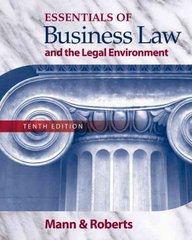Question
Consider twocompanies, K-logs and G-Foods,that consider selling ready-to-eat breakfast cereals. Firms entering the market must launch an advertising campaign. However, an advertising campaign has acostof
Consider twocompanies, K-logs and G-Foods,that consider selling ready-to-eat breakfast cereals. Firms entering the market must launch an advertising campaign. However, an advertising campaign has acostof 500 euros (equal for both firms). For the purpose of the exercise, consider that the marginal operating costs of both firms are normalized to zero.
There arefour possible segmentsfor the varieties of breakfast cereals, namely Vegan, Health, Family and Children. Marketing research indicates that there are3000 customersof breakfast cereals,uniformly distributed along the range [0, 3], that represents the preferences for sugar intensity.
These customers incur in a disutility when they buy a product different from their preferred one, in terms of sugar content. This disutility is given by(v-x)2, where "v" is the variety of the firm's product, (its location on the spectrum of preferences in terms of sugar), and "x", the location of the customer in terms of preferences for sugar. Each customer decides to buy the product that is closer to their preferences, i.e. the one that minimizes the price charged by the firm plus the disutility associated to the distance between his preferences and the firms' product variety. The consumers will only buy the product if that total cost (price plus disutility) is not higher than theirreservation price, equal to 12 euros.
Imagine thatK-loggs decides firstwhat variety to launch, knowing that G-Foods observes his decision and will launch its variety (location) afterwards.
Consider that, with a probability of 50%, the Government launches a regulation banning the sugar content above a certain amount, which is equivalent to eliminate Children's segment (in consequence 1000consumers will be out of the market). In that case, the market reduces to 2000 consumers uniformly distributed along the segment [0, 2].
Note:when firms enter the market, both know that the Government will implement the sugar ban with a probability of 50%; when firm K-loggs enters the market she already knows that firm G-Foods will also enter.
Question a)When deciding to enter the market (at positions 0, 1, 2, or 3), what will be the decision of K-loggs in terms of variety? Which variety will G-Foods choose? Explain in words (without calculations) the reasoning supporting your answer.
Question b)Assume that if both firms remain on the locations that they have chosen initially, the equilibrium prices will beP= 20/3for K-loggs and= 16/3 for G-Foods, respectively. Considering this information, explain why K-loggs has a higher price and compute, for each firm, the market share and profit.
Assume that only K-loggs has the opportunity to change the variety of its product if the regulation is rejected by the Parliament and, in consequence, it is not implemented. In order to be able to change the product variety, K-loggs must buy a different technology, before it takes the initial entry decision. This technology implies an extra cost of 700 euros. Furthermore, it knows the following information:
- if the regulation is rejected, and K-loggs changes its location, both firms practice a price equal to 9 euros.
- if the regulation is implemented both firms will practice a price equal to 4euros.
question c) Should K-loggs buy that technology? Justify quantitatively.

Step by Step Solution
There are 3 Steps involved in it
Step: 1

Get Instant Access to Expert-Tailored Solutions
See step-by-step solutions with expert insights and AI powered tools for academic success
Step: 2

Step: 3

Ace Your Homework with AI
Get the answers you need in no time with our AI-driven, step-by-step assistance
Get Started


